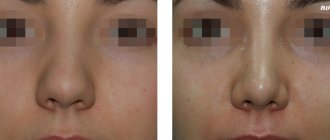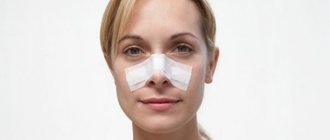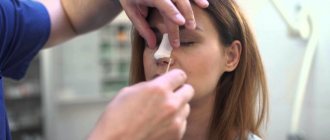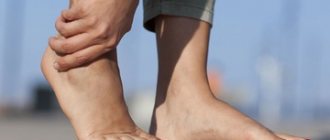Callus is a common phenomenon, because it can appear in almost every person. This formation is a compaction on the bones, which differs from the usual callus that occurs on areas of the skin. Accordingly, its treatment has its own characteristics. Therefore, you should know what causes the pathology and how to get rid of it. Considering the current trend, with neoplasms and lumps, in the initial stages, it is not recommended to self-medicate, but to consult a specialist. Having ruled out other diseases and received a final diagnosis, treatment can be carried out.
Reasons for appearance
The formation of such growths occurs when bones heal after fractures. Frequent physical activity can also provoke pathology. The occurrence of these formations can be influenced by unsuccessful rhinoplasty (plastic surgery in the nose area).
Factors for the development of calluses are:
- improper fusion of bone tissue;
- early periods of loads on the fracture site;
- violation of the rules of rehabilitation actions;
- weakened immune system;
- endocrinological diseases;
- age;
- severity of fractures and their number.
- inflammation accompanied by a purulent process in the broken area;
- poor blood supply to the bone;
- improper treatment of a fracture.
This pathology can appear after bone fractures in the following parts of the human body:
The timing of the formation of bone calluses depends on the location of the fracture.
Experts distinguish several stages in the development of growths on bone tissue:
- Formation of a provisional growth (in the first week after injury).
- Transformation of the scar into cartilage tissue (this stage lasts about a month).
- The cartilage gradually ossifies (up to six months).
- Formation of a growth on the bone (one year after the fracture).
Calluses are a stage of bone fusion. But if this process occurs incorrectly, then such formation leads to undesirable consequences. In such cases, it is necessary to get rid of excess connective tissue.
How to get rid of heel spurs?
Readers constantly write letters to us with questions: “How to deal with foot fungus? What to do about unpleasant foot odor? and other pressing questions from our readers.” Our answer is simple, there are many folk remedies. But there is also a more effective remedy for fungus ARGO DERM, which doctors have now developed. Actually, A. Myasnikov gave an interview regarding this product, we advise you to read it.
What if the callus has not formed?
The formation of callus is a rather delicate process that can be negatively affected by many factors. How the bone will regenerate depends on:
- absence/presence of damage to the skin and, accordingly, penetration of microorganisms into the fracture site;
- complete restoration of the anatomy of the damaged area;
- maximum immobilization of bone fragments;
- complete blood supply to the fracture zone;
- timely provision of dosed loads on the damaged segment.
If all conditions are met, the bone grows together through primary healing. If adequate conditions for healing are not provided, complications may develop:
- delayed consolidation of the fracture;
- non-united fracture;
- false joint.
All these disorders arise, in fact, due to improper formation of callus.
Treatment of calluses
Since this phenomenon is not a disease, but an intermediate stage of bone fusion, it does not require treatment. But there are indications in which it is necessary to get rid of excess growing tissue. Among these factors:
- feeling of discomfort and pain in the problem area;
- limited mobility as a result of bone growth;
- hyperemia;
- swelling;
- increased temperature at the fracture site;
- not aesthetically pleasing.
To get rid of the pathological process during tissue regeneration after a fracture, you need to contact a specialist who will prescribe the following treatment methods:
- physiotherapy;
- drug treatment.
In some cases, surgery is possible. To improve the therapeutic effect, you can use folk remedies.
For treatment to be effective, you must adhere to the following rules:
- No loads should be placed on the bone where the defect forms.
- Treatment is carried out under the supervision of a specialist.
- It is recommended not to overcool the growth site. Overheating is also not allowed.
- Avoid visiting solariums, saunas and steam baths.
- Follow a special diet that promotes proper bone restoration.
- If there are formations on the nose, you should not spend a long time in the air, especially in sunny or rainy weather. Around the crescent moon, you should not blow your nose and try to avoid sneezing.
What to do if a callus does not form?
Callus does not require treatment as it is considered an intermediate stage between fracture and repair. However, in some cases, even after complete fusion of the bone, thickening remains at the fracture site. If its location has aesthetic significance (located on the face, for example) or functional significance (compresses the roots of intervertebral nerves during vertebral fractures), correction of such a periosteal focus is carried out.
With delayed consolidation, it is necessary to ensure high-quality immobilization of the fracture site so that the callus from the cartilaginous stage can transform into bone.
In case of ununited fracture, especially if there is a defect in the bone tissue, surgical treatment is indicated. The missing area of bone is filled with auto- or allograft and fixed until healing.
In case of a pseudarthrosis, surgical intervention is indicated to remove callus and granulation tissue, followed by correct comparison of fragments and high-quality immobilization. In such cases it is often necessary to use the Illizarova apparatus.
Particularly difficult are the consequences of fractures of the bones of the hand - carpal, metacarpal and fingers. Severe tendon and muscle traction, the small size of the bones and their joint movement make repositioning and fixation of fragments especially difficult. By “joint movement” we mean the dependence in the hand between the movement of all the bones of its components. In general, finger fractures are almost always accompanied by ruptures of blood vessels and ligaments. All this prevents the full formation of callus. Immobilization with metal structures is indicated.
Callus from a fractured finger. On the left is the condition after a fracture with the formation of a bone callus. On the right is the result of the treatment.
A common pathology - hallux valgus - is often called callus among the general public. In fact, the essence of the pathology lies in the deformation of the joint between the big toe and the metatarsal bone adjacent to it. Due to constant inflammation in this area, a periosteal reaction gradually develops - bone proliferation under the periosteum. As a result, the deformation is also accompanied by coarsened periosteum with a bone growth underneath it. Based on its morphology, hallux valgus is not considered a callus.
Physiotherapy and callus
Physiotherapy for fractures helps prevent the formation of contractures, adhesions, and dysfunction in the future. Among the wide range of physiotherapeutic methods, physical therapy is of greatest importance for fractures. At the stage of callus, when there is confident fixation of fragments, exercises with dosed loads accelerate the transformation of callus into young bone tissue, promote the orientation of bone beams according to the direction of the load, which strengthens the bone structure.
Various heating, electrophoresis, massage and similar procedures may also be useful, but their effect must be controlled. For example, the widely recommended UHF does not make sense to use in the final phase of treatment, and immediately after a fracture it can provoke an increase in the hematoma. During the period of immobilization with a plaster cast, UHF does not penetrate sufficiently into the tissue. The same applies to electrophoresis and magnetic therapy.
Physical procedures
Physiotherapeutic procedures are the main method of treating pathological formations on the bones. Resorption of growths with their help takes a long time, but is effective. A doctor prescribes such procedures. Most often, to get rid of pathology, the following methods of physiotherapy are used:
- electrophoresis (with hydrocortisone);
- magnetic therapy;
- ultrasound treatment (using solutions of hormonal ointments);
- therapy using ultrahigh frequencies.
Physiotherapy
Patients who have developed a callus after nasal surgery, in addition to taking medications, are prescribed a course of physiotherapeutic procedures aimed at increasing the effectiveness of the main treatment and stimulating regeneration processes in the body. These include the following:
As practice shows, the combination of these methods in combination with taking medications gives a positive result. But in very rare cases, no improvement occurs, so the patient requires surgery.
Folk remedies
To improve the patient's condition and get rid of unpleasant sensations, various compresses, lotions and baths are used.
For compresses, it is recommended to use infusions from the following medicinal plants:
They perfectly relieve inflammation and promote recovery.
- At night, it is recommended to apply freshly cut aloe leaves to the problem area.
- Applying a compress of vinegar (apple vinegar) and soda to the sore area is very soothing.
- Alcohol lotions are also used to reduce bone growth and relieve pain.
- As baths with warm water, you can use salt or soda solutions (one tablespoon per liter of water).
We accelerate the healing of bones after a fracture
To prevent the development of a pathological process when healing broken bones, one should adhere to the rules of prevention. These include mandatory compliance with all doctor’s recommendations after fractures.
And a little about the author’s secrets
Have you ever experienced unbearable joint pain? And you know firsthand what it is:
- inability to move easily and comfortably;
- discomfort when going up and down stairs;
- unpleasant crunching, clicking not of your own accord;
- pain during or after exercise;
- inflammation in the joints and swelling;
- causeless and sometimes unbearable aching pain in the joints.
Now answer the question: are you satisfied with this? Can such pain be tolerated? How much money have you already wasted on ineffective treatment? That's right - it's time to end this! Do you agree? That is why we decided to publish an exclusive interview with Oleg Gazmanov, in which he revealed the secrets of getting rid of joint pain, arthritis and arthrosis.
Callus after rhinoplasty is formed due to the body's reaction to the changes that occurred as a result of surgery.
During the process of regeneration, new bone tissue grows in place of the removed areas of bone.
A common type of operation, after which a callus occurs in 13 out of 100 cases, is rhinoplasty of the nose.
A callus after rhinoplasty does not pose a threat to the patient’s health, but it deforms the shape and leads to the appearance of humps, irregularities, and asymmetry.
Stages of formation:
- During the first week after rhinoplasty, a provisional callus appears.
- Cartilage or bone tissue is then formed from osteoid tissue.
- Complete formation of callus lasts up to six months.
Types of callus:
- Periosteal,
- Intermediary,
- Endosteal,
- Paraosseous.
Surgeons are interested in only 2 types of formation: periosteal and paraosseous .
- The first type of callus is positive and expected. When it occurs, a thickening of the contours of the nose along the fracture line is observed.
- The second type is unfavorable, since callus develops in the thickness of the surrounding tissues due to the accumulation of bone chips. It is most often formed when hump plastic surgery was performed using a rasp or physiodispenser. Plastic surgeons always strive to prevent such an outcome from the operation.
Radiography helps detect callus : in the pictures it looks like a shell at the site of damage to bone tissue.
Causes
The peculiarities of the occurrence of callus lie in the properties of bone tissue, which differs from other organs and systems in the special course of regeneration and restoration processes.
The healing process goes like this:
- Connective tissue forms around the damaged area.
- It forms soft bone tissue from thin fibers.
- These fibers ossify and become stronger. A growth appears at the site of tissue fusion. Its size depends on the severity of the injury received as a result of the operation and the regenerative properties of the patient’s body, which are individual for everyone.
The reasons for the appearance and growth of callus after plastic surgery include the following::
- The individual ability of the body to restore bone tissue.
- Experience of a plastic surgeon - after the work of a real professional, hypergrowth of bone fibers does not occur.
More often, the growth of callus after rhinoplasty is observed after removal of the hump and with complete rhinoplasty, when a global correction of the shape of the nose is performed.
Treatment
Callus after rhinoplasty may require different treatment methods. The treatment program is selected by the surgeon individually for each patient depending on the clinical picture, but most often it is based on the use of certain medications. The main efforts of doctors are aimed at preventing the further development of the hyperplasia process. To do this, a number of techniques and procedures are used that are highly effective in combating the problems of hypergrowth of bone tissue. At the same time, we should not forget that it is much easier to deal with a defect in the early stages, therefore, if it is detected, it is very important to contact a medical institution as soon as possible to receive professional help.
Taking medications is combined with physiotherapeutic procedures, and if no improvement is observed over a long period of time, doctors prescribe repeated nose correction. However, the latter is a last resort, which is resorted to very rarely.
How to remove a callus?
Having discovered a callus, people wonder how to remove the complication that has arisen.
Ways to eliminate callus on the nose:
- Repeated surgery (prescribed less frequently than other methods).
- Treatment with drugs.
- Physiotherapy.
In 27% of such cases, repeated surgery will be required to avoid further growth and thickening of the callus.
Callus after rhinoplasty goes away with physical therapy and medication. For an in-depth study of the problem that has arisen and its solution, it is necessary to contact the surgeon under whose supervision the rhinoplasty was performed.
Let's consider each option in more detail.
Operation
Callus removal is carried out when other methods are ineffective, at high temperature, hyperemia and swelling.
Surgery does not guarantee 100% prevention of recurrence of the problem.
Drugs
To prevent the formation of callus after plastic surgery, doctors prescribe medications containing glucocorticoid hormones, which eliminate swelling and accelerate tissue healing.
Use:
- Diprospan - in the form of injections, relieves swelling and inflammation, promotes improved scarring.
- Traumeel S - homeopathy in the form of ointments, tablets and drops, has a complex effect.
- Kenalog – gives an anti-inflammatory effect, used as intramuscular injections.
Physiotherapy
Thanks to physiotherapeutic procedures, the callus gradually resolves.
Methods used:
- Magnetotherapy.
- UHF.
- Thermotherapy.
- Electrophoresis with lidase and hydrocortisone.
- Ultrasound treatment using steroid ointment.
- Phonophoresis.
Physiotherapy methods differ in the duration of treatment.
Why does callus appear after rhinoplasty and how to remove it
When planning to change something in your appearance, you should pay attention not only to the desired result, but also to the possible difficulties of the recovery period, as well as ways to avoid them.
Callus after rhinoplasty is growths on the outer and inner sides of the nasal skeleton caused by its damage during surgery. They appear if an osteotomy has been performed, and in some cases require additional treatment, including repeated surgery. Why do such formations arise and what is their function? Can they pass on their own? Are there reliable methods of prevention? TecRussia.ru studies the information and shares its findings:
↑ How and why is callus formed?
It is normal for our nose to heal after damage, incl. surgical, occurs in several stages:
- Initially, a fibrocartilaginous skeleton grows on the injured area, the main task of which is to hold the broken bones in the most motionless position. This is a callus, and it appears both on the outside of the damaged area (periosteal) and on the inside (endosteal).
- The formation will increase in size until it ensures reliable fixation of bone fragments: the less mobile they are initially, the faster growth will stop. Externally, it may look like irregularities and bumps on the bridge of the nose, a sudden hump, asymmetry of the sinuses, etc. - depending on the exact area where the surgical injury occurred. In uncomplicated cases, this stage takes 2-4 weeks.
- The next step is the formation of the so-called. intermediary callus - it arises between adjacent parts of damaged bones and gradually grows them together, grows with blood vessels, thereby ensuring complete healing. This process is not visible from the outside; its progress can only be judged by X-ray data.
- After 6-8 weeks, the fusion ends, after which the periosteal and endosteal growths that have fulfilled their functions are significantly reduced, and in many cases, they resolve almost completely. There are no noticeable deformities of the nose, if any were present during the healing period.
Thus, the appearance of callus after rhinoplasty is absolutely normal and contributes to the proper healing of damaged areas. With good fixation of the fragments, the entire process takes no more than 2 months, leaves no visible marks and ends with the formation of full-fledged nasal structures that are resistant to external mechanical influences and fractures.
Problems arise if the periosteal growths grow too actively in size and become denser. This may happen for one of the following reasons:
- The cartilage and bones with which the work was carried out are poorly fixed and are in constant movement - for example, due to an incorrectly applied bandage.
- The patient’s violation of the surgeon’s recommendations in the early postoperative period: any external influences on the nose, attempts to scratch it under a cast, severe sneezing, active physical activity, etc. lead to displacement of bone fragments that have just begun to fuse and enlargement of the callus.
- Traumatic surgical technique. The more damaged the skeletal part of the nose was and the less gentle methods of its reconstruction were used, the higher the chances of complicated healing.
- Individual characteristics of the body. In some people, the tendency to increased growth of cartilage and fibrous tissue is genetically determined - similar to the tendency to form keloid scars.
Healing in such conditions takes much longer - up to six months or more; the periosteal formation often grows excessively large and massive, and does not decrease even after complete fusion of all bone structures, leading to visible changes in the shape and contours of the nose.
↑ Is it possible to remove it and how to do it?
As a rule, patients begin to panic 1-2 months after surgery, when, firstly, the callus reaches its maximum size, and secondly, the main swelling goes away and you can begin to examine your new nose in all details. But if during routine examinations the surgeon does not see any “crime” (for example, excessive growth of bone tissue), then there is nothing to worry about. Any formations that form during the recovery period after a nose job may go away on their own—doctors recommend waiting 6 to 12 months before doing anything else.
| Photo 1 – large callus after primary rhinoplasty: | |
However, sometimes already in the first weeks of rehabilitation it becomes obvious that the growth is growing too rapidly - an experienced doctor can easily diagnose this situation during a face-to-face appointment. In this case, it is better not to delay treatment in order to avoid further surgery. The first step is usually to prescribe one of the following drugs:
- Diprospan. It is used in the form of subcutaneous injections. The effectiveness of the product is associated with its ability to reduce the severity of inflammatory reactions, thereby preventing the formation of large periosteal growth.
- Kenalog. It is administered intramuscularly. Belongs to the group of corticosteroids. The main active component is triamcenolone acetonide, like Diprospan, it has an anti-inflammatory effect and softens connective tissue.
- Traumeel S. A homeopathic remedy, for this reason it is used extremely rarely in surgical practice. It is used both externally as an ointment and internally (tablets, drops). The effectiveness has not been scientifically proven, but has been confirmed by clinical observations.
In addition, physical therapy may be prescribed: electrophoresis with hydrocortisone and lidase, ultrasound treatment of the problem area using steroid ointment, etc. – such procedures also reduce the severity of inflammation and the size of the developing callus.
A follow-up examination is carried out ~1 year after surgery. By this time, any growths on the outside of the nose should have resolved. If defects remain, further treatment tactics are selected based on their size and impact on the aesthetic result of the operation:
- Small irregularities caused by the presence of periosteal formation can be corrected with the help of fillers (for more details, see the article “Non-surgical rhinoplasty: how to fix your nose without going under a scalpel?”). Injections provide a temporary result and the procedure must be repeated every 6-8 months - as a rule, this option is used as a temporary one, while awaiting surgery or if there are contraindications to it.
- The main way to remove old callus is repeated surgery, which involves mechanical removal of the growth. It is performed under general anesthesia, but is otherwise considered much easier and safer than primary rhinoplasty. The osteochondral skeleton of the nose is practically not injured, therefore the risk of relapse is reduced to zero.
| Photo 2 – results of correction (surgical plastic surgery was performed): | |
↑ How to avoid the appearance of callus: expert recommendations
Hypertrophy of fibrocartilaginous tissue after rhinoplasty can be prevented. Much depends on the surgeon - during the operation he must make careful, low-traumatic incisions, and then correctly align and fix the bone fragments, ensuring their complete immobility. Therefore, the choice of a specialist and his qualifications should be taken very seriously.
Also, the patient must strictly follow the rules of the postoperative period. There are few of them, but they are all important:
- in the first three days, keep to bed rest;
- in no case should you remove or loosen the plaster cast yourself, climb under it with your hands or foreign objects to scratch yourself, etc.;
- for 7-14 days after surgery, minimize physical and emotional activity: do not go to the gym, take time off from work;
- in the first two weeks, clean your nose exclusively with cotton swabs or turundas - blowing your nose is strictly prohibited;
- do not expose your face to frequent and prolonged exposure to high temperature: bathhouse, beach, sauna, bathroom are prohibited for you for a month;
- protect the postoperative wound area from hypothermia;
- If you wear glasses, replace them with contact lenses for at least 2-3 weeks.
↑ What you need to remember
|
Prevention
Preventive measures against callus formation after rhinoplasty:
- Fulfilling doctor's orders during rehabilitation.
- Urgent contact with an observing specialist when the first signs of pathology appear.
- Careful selection of the clinic and surgeon for the operation. Since rhinoplasty is a common procedure and has an affordable price, it is important to analyze all the offers and choose the most proven one with a good reputation, without being tempted by low prices and dubious reviews.
Callus is the result of the body’s natural reaction to surgery, a kind of protective mechanism. Such formations after rhinoplasty often cause complications and pain in patients. Modern physiotherapy, medications and repeated surgery can solve the problem. How to effectively remove bone formation and save yourself from suffering?
Read in this article
What to do and what to do
So, you noticed that you have a callus after rhinoplasty. How to remove it? You won’t be able to get rid of it yourself at home without the help of a qualified specialist, so it’s best to follow the following procedure:
- Send an appointment to the surgeon who performed your nose correction, regardless of how long during your rehabilitation the problem appeared. This is especially true for force majeure situations that require immediate medical attention.
- After passing the examination, the doctor will prescribe a treatment program for you, which must be followed strictly. This is the only way you can achieve the desired result and restore your appearance to its former attractiveness.
It is worth noting that hyperplasia is most often diagnosed in young people under the age of 18, so they are strongly discouraged from going under the knife of a plastic surgeon. This is due to the fact that their bone skeleton has not yet been fully formed, but continues to develop, so in place of one eliminated defect, another can always appear. In addition, there is a high risk of developing various serious complications that can pose a great threat to human health.
Causes of a defect on the nose
The appearance of a callus should be considered as a protective reaction of the bone. After all, surgical intervention involves damage to the internal structure of the nose, and the body begins to regenerate and restore missing elements. The main causes of the defect are considered to be the following:
- tendency to excessive formation of connective tissue with the formation of rough scars;
- unprofessional work of the surgeon.
Structure of the nose
A similar problem can be detected one year after rhinoplasty. During this time, three successive stages of callus development occur:
- connective tissue appears at the site of damage;
- the formation of thin bone fibers begins;
- calcium salts create a hard build-up.
The size of the formation depends on the scale of the operation performed and the individual characteristics of regeneration.
Features of formation
In the first 7 days after the fracture, the formation of a soft adhesion of connective tissue begins at the site of fusion, which is called a provisional callus. It is transformed into an osteoid formation, which is subsequently formed into bone tissue. The appearance of callus occurs later from the cells of the periosteum and endosteum, and its transformation into bone occurs after 12 months.
The duration of fusion of the bones, the formation of callus and its nature are influenced by the type of broken bone:
- in case of a collarbone fracture, it takes 1.5–2 months for the formation to form, which will go away on its own over time, but some cases require surgery;
- if a toe is broken, a seal forms within 30 days; if it appears between the toes, you will need to wear comfortable shoes so as not to injure it and prevent the appearance of corns;
- if the heel is damaged, it takes 2–3 months for the formation of a callus;
- in case of a rib fracture, the seal forms over 3–4 months and resolves within a year;
- When the nose is damaged, the timing and size of the formation is influenced by the severity of the injury.
Callus forms over time. The following factors influence this process:
- correctness and timeliness of first aid;
- degree of injury;
- patient's age;
- general condition of the body.
A lump may appear after rhinoplasty of the nose for 3 months, but this phenomenon is rare.
Treatment of problems after rhinoplasty
The main goal of treatment is to eliminate a possible complication using existing techniques and methods. They must be used almost immediately after surgery. A combined approach allows you to quickly achieve the desired result. However, the presence of individual contraindications (for example, temperature) may limit the choice of procedures. The first stage is to reduce inflammation in the area of damage with the help of medications.
Treatment with medications
Drug treatment after rhinoplasty stops the growth of bone tissue, eliminates swelling and redness. The drugs contain hormones that stabilize the healing process. There are several well-known brands:
- Diprospan . An injection containing high levels of hydrocortisone is given under the patient's skin to reduce inflammation.
- Kenalog. An intramuscular injection is performed to stabilize the scarring process.
- Traumeel S. A topical medication is used in the form of drops or ointment to relieve redness and swelling.
The effect of the medications will be noticeable after 6 to 12 months, so it is necessary to undergo regular examinations with a doctor. The drugs should be used only on the recommendation of a specialist.
How to remove a callus with surgery
Such a radical method as surgical correction is prescribed when other methods have not given the desired result. Often the defect manifests itself in the form of the following unpleasant sensations after drug therapy:
- difficulty breathing through the nose;
- elevated temperature;
- redness of the bridge of the nose and pain.
After surgical correction (revision rhinoplasty) of callus
Based on the results of the examination and, if necessary, additional diagnostics, the method of the planned operation to remove the callus is determined. There are a number of techniques that can eliminate further formation of the defect.
Physiotherapy on the bridge of the nose
These procedures are considered the most effective way to eliminate formation. The treatment process is under the supervision of a doctor for a long time. Special techniques are aimed at resorption of bone tissue and improvement of regeneration. The list of physical procedures is as follows:
- drug electrophoresis;
- ultrasound therapy;
- use of thermotherapy;
- phonophoresis.
The presence of general contraindications may cause refusal of such procedures. Physiotherapy is also prohibited at elevated temperatures, so it is necessary to undergo a preliminary consultation.
Does callus resolve or need to be removed?
Bone formation occurs over a long period of time. Repeated surgery is quite rarely prescribed. It is carried out in the following cases:
- with hypergrowth of fibers;
- for functional disorders of the nasal passages;
- at elevated temperatures;
- when elements of inflammation appear, for example, redness on the bridge of the nose.
At the first sign of a defect, you should consult a doctor. The problem can be identified by the following symptoms:
- the formation of a small hump on the bridge of the nose;
- change in proportions, asymmetry;
- swelling.
Preventing the appearance of callus on the nose
There are simple rules for prevention after rhinoplasty for patients. The list of recommendations is as follows:
- it is necessary to strictly comply with all conditions of the rehabilitation period;
- You should consult a doctor if primary symptoms of callus occur;
- it is necessary to observe bed rest for 3 days after plastic surgery;
- It is better to avoid physical activity for a month;
- It is forbidden to blow your nose for two weeks;
- it is necessary to avoid hot baths, saunas, baths;
- you cannot wear glasses;
- It is better to limit prolonged exposure to the sun.
Recommendations are aimed at rapid and proper restoration of damaged tissues. Failure to follow simple rules leads to serious complications in most patients. Regular visits to the doctor significantly reduce the risk of developing a callus on the nose.
The body's natural defense system can cause certain troubles after rhinoplasty. The body's compensatory abilities lead to the formation of a bone formation on the bridge of the nose.
However, the use of medications and physical therapy can prevent further surgery. Under the influence of hormones and a set of procedures, the callus is successfully resolved. Attentive attention to the recommendations during the rehabilitation period allows you to forever preserve the natural harmony of the face and the functional abilities of the nose.
Complications
If the patient does not seek help from a doctor for a fracture , or the surgical intervention is performed incorrectly, after the formation of the callus, it begins to rapidly increase in size. The growth often appears in an inconvenient place, and therefore causes discomfort to the patient.
To prevent the progression of pathological processes, it is necessary to minimize all negative factors. If treatment is not started in a timely manner, there is a high probability of developing pseudarthrosis.
After surgery or injury, strict bed rest must be observed.











